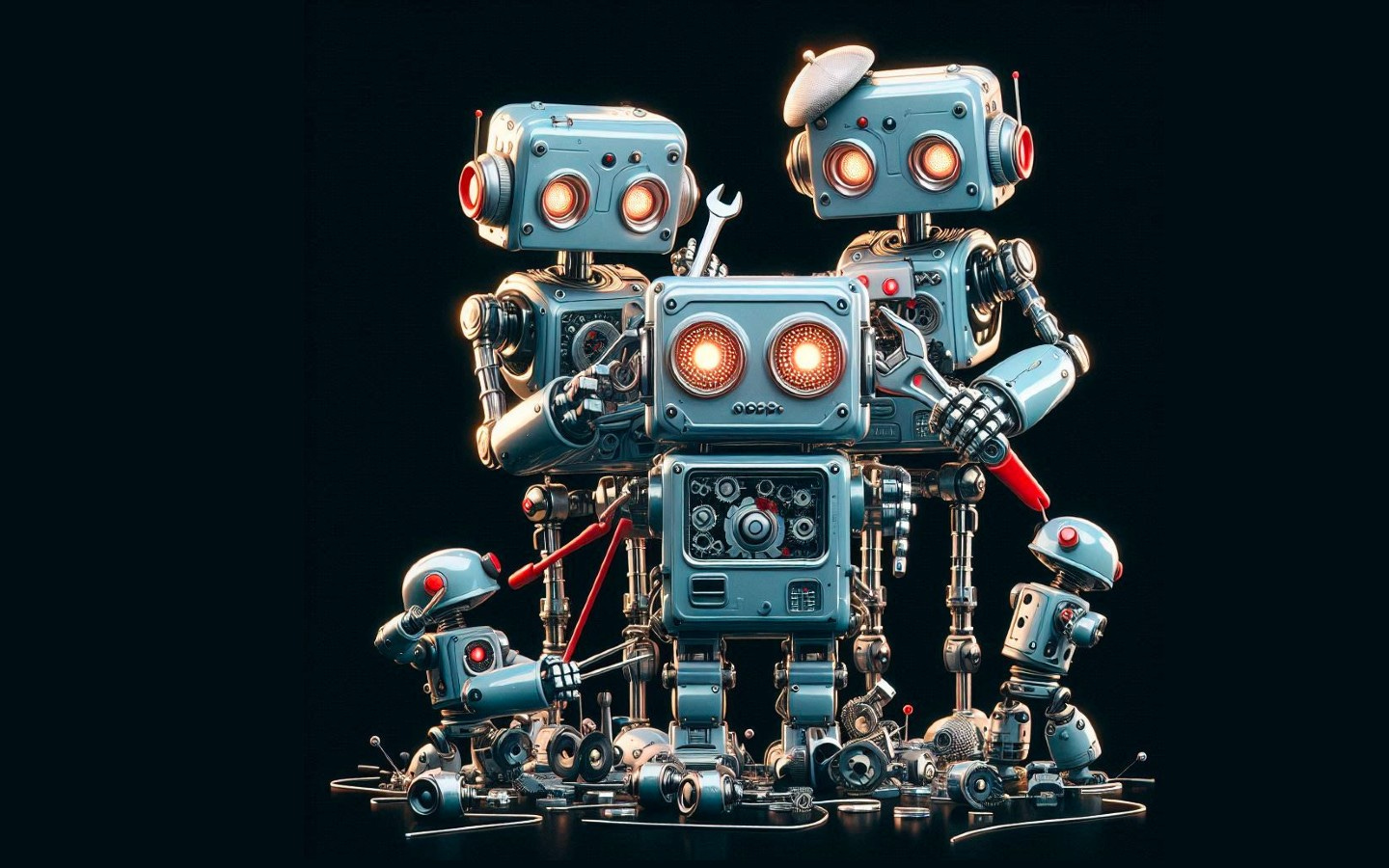After I completed my previous article about how to set up AI agents, two friends reached out to me. One, whom I hopped on a call with, struggled to set up the code dependencies to get my AI agents to run on his computer and asked in frustration, “Couldn’t I accomplish the same thing with Chat-GPT?” The second friend commented on one of my previous posts:
“One thing I’m testing is when is an autonomous agent better than multiple sequential prompts. The latter appears sufficient for most people’s use cases, but autonomous agents are touted as the solution everywhere, and they add needless latency.”
Both individuals raised good points, and while I had a ready-made answer for why AI agents were superior to manual prompting (“agents can operate autonomously without human feedback”), I realized this answer was insufficient. In today’s article, I dive into two core questions:
#1 – What are the use cases for which manual prompting is sufficient versus when AI agents are needed?
#2 - When is a lightweight AI agent system like CrewAI preferable to a more advanced AI agent framework like Langchain?
For anyone not interested in reading the full article, you can find the summary here. Also, I recommend checking out this fantastic article by Anthropic to understand different AI agent architectures, from basic to complex.
When Manual Prompting is Sufficient
After researching the matter more thoroughly, I came to the conclusion that manual prompting works well when one or more of the following conditions are met:
1). Linear Processes: The steps can be handled individually, with the user providing feedback or inputs after each step. For example, a prompt to generate blog titles, a follow-up prompt to draft an introduction, and a third prompt to create an outline based on the introduction.
2). Small-Scale or One-Off Tasks: If the task is simple and you only need to do it occasionally, manual prompting is efficient and requires no setup. For example, writing a prompt to summarize an article or generate an image.
3). Minimal Complexity: Steps don’t require branching logic, tool integrations, or adjustments based on real-time conditions. The most common scenario where manual prompting reaches its limit is when you want to pull in data from external APIs or databases to inform the LLM’s decision-making.
While many tasks fall into one or more of the above categories, the shift from sequential prompts to AI agents occurs when autonomy, external integrations, or scalability become critical. If you find yourself repeating similar steps manually or requiring more than 3-5 sequential prompts for a task that could be automated, it’s time to consider an AI agent solution.
When Lightweight AI Agents Shine
In my article on AI agent setup, I used an open-source framework called CrewAI to set up my team of AI agents. CrewAI and tools like it (e.g. Integromat’s or Zapier’s AI capabilities) have some limitations versus more advanced AI agent frameworks like Langchain, which is why I refer to them as “lightweight AI agents.” However, these lightweight AI agents still enable you to gain more autonomy, scalability, and external integrations than manual prompting. Diving into each area:
1). Autonomy: Let’s say you wanted to scrape news articles from multiple websites and generate a report on industry trends for 20+ industries. Manual prompting could technically accomplish this, but it would require you to sit at your keyboard for hours, tediously punching in one prompt after another. However, lightweight AI agents allow for parallelization (i.e. simultaneous execution of tasks). This enables you to hit ‘go’ and wait for your AI agents to scrape data on each website in parallel, summarize key industry points, and compile it into a comprehensive report. This is not only a lot less painful than hours of manual prompting, but it will also be executed far faster.
2). Scalability: Let’s say that you are a large e-commerce company that receives 50,000 monthly customer reviews for all your products across your website and Amazon. You want to analyze these reviews to identify sentiment (positive, negative, neutral), extract key themes, and summarize the most common complaints and compliments into a report.
If you were to attempt to do this in a single batch with Chat-GPT and manual prompting, you would quickly bump into its 4,000 token limit per request (4,000 tokens is ~ 3,000 words). Thus, you would manually need to break the reviews into 100+ batches, input each one by one, and wait for completion before handling the next batch.
However, lightweight AI agents will automatically split the reviews into manageable batches based on their token counts, process each batch in parallel using multiple agents, and consolidate the results from each batch into a single unified output. Consequently, you will get your answer substantially faster and with less manual input.
3). External Integrations: Let’s say that you wanted to monitor social media platforms via APIs (e.g. Twitter or Reddit) to track brand mentions and analyze sentiment trends. Manual prompting with Chat-GPT would be insufficient here since you cannot connect to APIs with manual prompting. Furthermore, even if it were possible to connect to APIs with manual prompting, you would still have issues doing consistent monitoring and could easily bump into the 4,000 token limit, given the sheer amount of data on social platforms. However, lightweight agents would enable you to connect to the APIs, monitor them consistently, and pull insights into a unified report.
While lightweight AI agents are a big step-up from manual prompting, they still bump into some limits. The shift from lightweight AI agents to complex agents occurs when long-term memory, adaptability, and robust decision-making are required.
When Complex AI Agents Are Critical
The next level up from lightweight AI agents is what I will refer to as “complex AI agents.” Some examples of these tools include Langchain and Haystack. When your applications or use cases require long-term memory, adaptable AI agents, or AI agents capable of robust decision-making, it’s imperative to upgrade from lightweight to complex AI agents. Below are some use cases where complex AI agents are necessary:
1). Long-Term Memory: Let’s say you are building an AI-powered customer support assistant for a SaaS product that interacts with users over multiple sessions. The assistant must remember past interactions with a customer, automatically reference prior troubleshooting steps to avoid redundancy, and provide personalized solutions or escalate issues based on historical context.
Lightweight AI agents store no memory across sessions, so they cannot remember prior conversations. If a user contacts support again, lightweight AI agents start from scratch, requiring the user to repeat their problem.
However, complex AI agents can store each customer interaction in a vector database (e.g. Pinecone) and retrieve relevant context during future interactions. They can also tailor responses based on stored history, skipping unnecessary steps. In addition, they can track how many times a customer has contacted support and escalate unresolved issues automatically.
2). Adaptability: Let’s say you wanted to generate assets (blogs, social media posts, and videos) for marketing campaigns using different tools (e.g. OpenAI for text, DALL·E for images, Synthesia for videos). Each campaign will be unique, and you want the AI agent to be able to adaptively choose the tools needed for each type of asset based on campaign requirements.
This is a scenario in which lightweight AI agents are insufficient. While lightweight AI agents can integrate tools, they cannot dynamically decide which tools to use or in what sequence. However, a complex AI agent can determine which tool is best for which scenario and make decisions on the fly to achieve the desired outcome.
3). Robust Decision-Making: Let’s say you want multiple agents to work together to solve a complex scientific problem, such as designing a new drug. Agents handle tasks such as researching existing compounds, running simulations, evaluating results, and refining hypotheses.
Lightweight AI agents struggle here since they cannot coordinate iterative processes or adjust workflows based on interdependent outputs. For example, suppose the simulation agent finds that a compound fails. In that case, lightweight AI agents cannot re-task the research agent to explore alternative compounds.
However, complex AI agents can re-task other agents based on real-time results. If the simulation results were negative, a robust system would reassign the research agent to explore alternative compounds and retry simulations.
Conclusion
When working with AI, the key is to match the tool to the task. Manual prompting works for simple, linear tasks. But as autonomy, scalability, and integration become essential, lightweight AI agents unlock significant efficiency gains. When memory, adaptability, or robust decision-making are critical, it’s time to embrace complex AI frameworks. By thoughtfully analyzing your requirements and applying the right level of automation, you can maximize impact while minimizing inefficiencies.
If you liked this content, please click the <3 button on Substack so I know which content to double down on.
TLDR Summary
This article explores when to use manual prompting, lightweight AI agents, or complex AI frameworks based on the complexity, scalability, and adaptability of tasks.
1. Manual Prompting
Manual prompting suffices when tasks meet these conditions:
Linear Processes: Tasks follow a clear, step-by-step sequence (e.g., generating blog titles).
Small-Scale Tasks: Occasional and simple tasks like summarizing an article.
Minimal Complexity: Tasks without branching logic or external integrations.
Takeaway: If tasks require more than 3-5 sequential prompts or repeated manual steps, consider upgrading to AI agents.
2. Lightweight AI Agents
Lightweight agents (e.g., CrewAI, Zapier’s AI tools) are ideal for tasks needing:
Autonomy: Automate repetitive tasks, like scraping articles and generating trend reports.
Scalability: Handle large datasets by processing in parallel, such as analyzing 50,000 reviews monthly.
External Integrations: Connect to APIs, like monitoring social media for sentiment analysis.
Limitations: Lightweight agents lack memory, adaptability, and robust decision-making, which may hinder complex use cases.
3. Complex AI Agents
Advanced frameworks (e.g., Langchain, Haystack) excel when:
Long-Term Memory: AI remembers and retrieves past interactions, ideal for customer support agents.
Adaptability: Dynamically select tools and workflows, such as generating multi-format marketing assets.
Robust Decisioning: Enable agents to iterate, coordinate, and refine workflows, useful for tasks like drug discovery.
Example: A robust agent identifies failed simulations and re-tasks other agents to explore alternative solutions.
Conclusion
Use manual prompting for straightforward tasks.
Opt for lightweight agents when scalability and integration are critical.
Embrace complex agents for tasks requiring memory, adaptability, or advanced decision-making.
By aligning the tool to the task, you can maximize efficiency and achieve the best results with AI.










